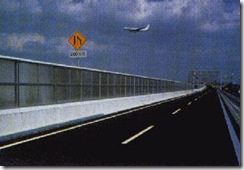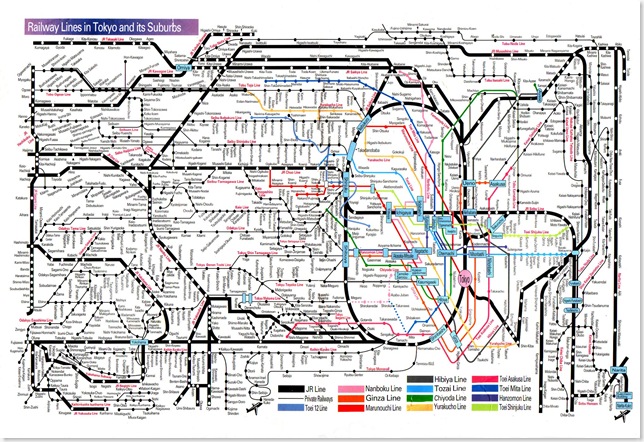Sunday, March 23, 2008
Honolulu transit noise: barriers work only if they build them
An op-ed in today's Advertiser, Modern steel wheel not your father's technology, proposes that the noise of an overhead transit system can be abated by use of short sound walls, and features an illustration of San Francisco's BART system.
Trouble is, this solution requires that the sound walls be built, and in a town which has done nothing to install sound abatement measures on its noisy highway system, what is the likelihood that Honolulu will have a sudden change of heart? I can hear Mufi saying "we can't afford it" and poof! no sound walls.
It's going to be bad enough for anyone who lives or operates a business near the Honolulu transit elevated right of way. Sound barriers wont help if your condo is above the tracks or if you are very close or underneath. Sound barriers also do not reduce the vibration of rail transit passing by. More discussion is clearly needed.
At base, Honolulu has not developed the standards necessary to reduce noise. Contrast this with Tokyo, which decades ago realized that the most effective method of reducing its pollution problem (including noise) was by regulation of the pollutant source. That is, Tokyo set standards for emissions, noise, and other urban pollutants and then enforced them.
Since Honolulu has not set standards to reduce transit noise (from cars or trains) there is nothing saying that noise will ever be reduced here. Reducing noise has not even been on our radar screen. The police seem never to enforce laws that would quiet motorcycle or other noise pollution. Maybe we care about noise, but our city government clearly doesn't.
One thing the Honolulu City Council could do, if it is concerned about noise, is get busy setting some standards. This could influence a decision on mass transit. That is, the choice of technology.
Japan regulates noise levels with monitoring stations located around the country. Standards are of little use unless they are enforced. Japan does that, Honolulu does not. As a result of enforced standards, transit in Japan has become quieter.
 Tokyo's elevated highway system (a blight, but at least a mitigated one) uses sound walls combined with high sound-absorbent barriers extensively. Special low-noise paving (porous asphalt) is used (and unrelated to noise, white paint for pavement marking that reflects headlights back to the driver).
Tokyo's elevated highway system (a blight, but at least a mitigated one) uses sound walls combined with high sound-absorbent barriers extensively. Special low-noise paving (porous asphalt) is used (and unrelated to noise, white paint for pavement marking that reflects headlights back to the driver).
Honolulu uses none of this. In fact, the design of sloping embankments reflects sound and makes living near the H-1 a constant ordeal of noise.
Where the Shuto Expressway passes through certain areas of suburban Tokyo, barriers rise higher than the picture, and even arch over the roadway for further absorption. It's like driving in a sound-absorbing tunnel on some sections west of Tokyo.
Given the standards, transit in Japan has had to reduce noise through the extensive use of noise barriers, construction of underground rail and road sections in built-up areas, and the use of low-noise pavement for vehicular traffic.
Transit noise not just from wheels
It's not just an issue of steel wheels, by the way. Stations are noisy places by design—they are places where passengers are given information and warnings.When a train pulls into a station, there will typically be announcements and warning bells, tones, or buzzers. Then there is a voice announcement of the station, and finally warnings (possibly multi-lingual for tourists) or bells about the doors closing.
I've written previously on how happy we were when the old Myrtle Avenue El was torn down in Brooklyn. A good part of our joy was the silence that replaced the cacophony of constant loudspeaker announcements and clanging bells. At last, no more interference with lessons in our classroom nearby the station.
With regard to trains and subways in Japan, I understand that some changes have been made to reduce the noise level around stations, but they are starting with a huge established system they have to tame. Here's Tokyo's transit system map (click for a larger image):
Honolulu is struggling to avoid becoming like Tokyo (I hope). We have an advantage: we can make choices on what we would like for ourselves, including choosing to maintain a high quality of life.
Finally, one thought about the rubber-wheel solution: if emergency vehicles are also allowed to use the elevated roadway, then there is no need for them to use sirens, for example. That current source of noise pollution can actually be reduced if a Phileas-type system, with on- and off-ramps to connect to UH and Waikiki, is selected, and if emergency vehicles can share the roadway with transit.
For train or urban design freaks, here's a book that treats the design of transit facilities seriously.
 | Building Type Basics for Transit Facilities (Building Type Basics) by Kenneth W. Griffin Read more about this title... |
Bottom line on transit noise in Honolulu: it hasn't been a priority until now, so why do we think, when the $billions in construction costs come up for approval, that anyone will spend money to reduce noise?
Evaluating the noise would be part of an EIS I imagine. Noise is a great polluter of the spirit. We can't count on the clowncil to address the problem. they are part of the noise problem.
I live along the PROPOSED Salt Lake Boulevard route and yes, I guess I have a vested interest in this route being moved back to it's original design, which is along Nimitz/Airport. The Mayor feels that we already have noise which will mitigate the sound of the rail. What..So, it's not going to make noise BUT IF IT DOES, the noise we already have to tolerate will make this bearable. To put this into prospective,to improve the quality of life for those coming in from the west, we have to give up our quality of life.
It's like that scene in the little room by the El in the "Blues Brothers" movie, with Mufi as Dan Ackroid telling John Belushi- the people- that the deafening noise of the train 10 feet outside the window isn't a problem because it goes by "so often you won't even notice it".
How does one get noise into the EIS if they leave it out? I agree on the health effects.
And stuff is thrown into the air also by a train. Metal doesn't get worn down and go to some kind of metal heaven, it goes into lungs and covers streets nearby.
<< Home





Post a Comment
Requiring those Captcha codes at least temporarily, in the hopes that it quells the flood of comment spam I've been receiving.